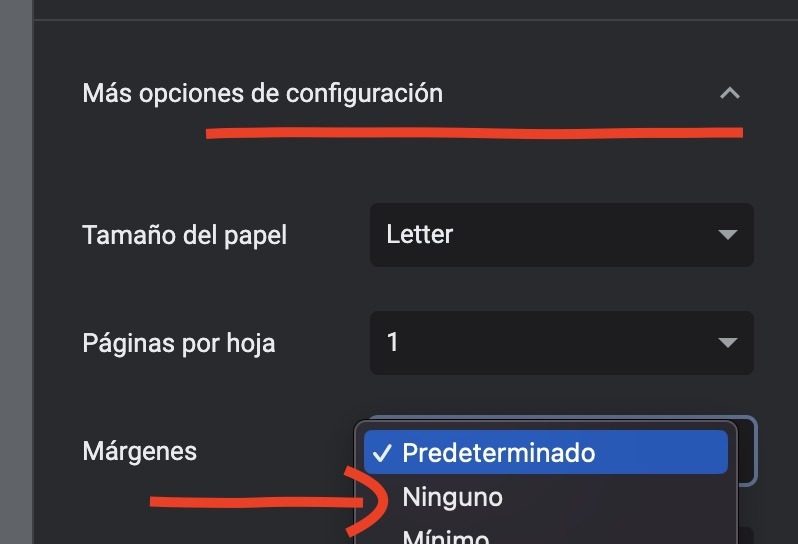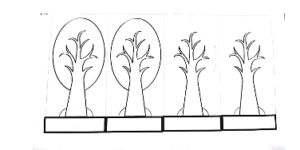English 4 Unit 1 Term 1 Week 3, 2025
Instrucciones:
• Los bloques sombreados en color gris se pueden ocultar en la impresión final.
• Para ello haga clic sobre cada uno de los bloques que desea ocultar.
• Para encenderlo nuevamente, pulse el bloque otra vez.
• Solamente los bloques encendidos serán impresos.
• Pulse el botón «Imprimir» cuando se encuentre listo.
• Para un mayor aprovechamiento del espacio, recomendamos eliminar los márgenes al imprimir.
¿Cómo guardar PDF?

Recomendamos utilizar el navegador Google Chrome.
Si no lo tiene instalado en su dispositivo puede descargarlo aquí.
El diálogo de impresión iniciará en cuanto cierre estas instrucciones.
En el cuadro de diálogo, cambie el destino de la impresión:

En las opciones, seleccione «Guardar como PDF»:

Para aprovechar todo el espacio de su hoja, recomendamos desactivar los márgenes:

Por último pulse el botón «Guardar»:

¿Cómo imprimir en color?

Recomendamos utilizar el navegador Google Chrome.
Si no lo tiene instalado en su dispositivo puede descargarlo aquí.
El diálogo de impresión iniciará en cuanto cierre estas instrucciones.
En el cuadro de diálogo de la impresión siga las siguientes instrucciones:
Si desea imprimir el planeamiento a color, asegúrese de activar la opción «Color»:

En la sección «Más configuraciones»:

Active la opción «Gráficos de fondo»:

Finalmente pulse el botón «Imprimir»:

School year: 2025
Period:
Term: I
Level: First Grade
Unit:1
Week: 3
Domain: Socio-interpersonal
Scenario: Weather Wise
Theme: What to wear?
Enduring Understanding: Depending on the weather, we can decide what we would like to wear, the kind of activities we would like to perform, and the way we feel.
Essential Question: How does weather affect the way we live?
General Competences:
Responsible Citizenship ( X )
Life Competences ( )
Competences for Employability ( )
Learn to Know
Grammar & Sentence Frames
Information questions with present continuous
- What are you wearing today?
Verb tenses (past tense / present progressive and past progressive / past tense)
- Yesterday, _____ (was) a sunny day. He _____ (was wearing) blue jeans and a t-shirt.
- Yesterday, it was raining, so we ______ (wore) boots.
- Yesterday, it was snowing, I went skiing
Information questions with past tense
- How was the weather yesterday?
- What were you wearing yesterday?
- Why did you wear a jacket yesterday?
Vocabulary
- What to Wear?
Objects:
- Umbrella
- Sunglasses
- Sandals, boots
Clothes:
- Raincoat, Sweater
- T-shirt, Pants
- Shorts, Dress
- Skirt
Phonemic Awareness
Blending spoken simple onsets and rimes to form real words (onset /c/ and rime / æt/) /- ɜr/.
Examples:
- Hot, got,not, pot
- hat, cat, at, bat.
- hotter, colder, happier.
Learn to Do
Function
Describing activities and clothing during varying weather conditions and seasons
Discourse Markers
- First, the weather in Costa Rica is beautiful.
- Then, the people are nice.
- After that, the food is delicious.
- Finally, the places I visited were wonderful.
Learn to Be and Live in Community
Psycho-social
- Developing skills to work cooperatively.
Sociocultural
- Using different ways of sharing personal experiences and concerns.
Idioms/phrases
Expressions
- Quick, get ready!
Idioms
- I am on cloud nine. (A person is extremely happy.)
Assessment Strategies & Evidences of learning
Learner…
Goals
Learner can…
Pedagogical Mediation/ Didactic Sequence
Pre-teaching
Teacher asks students:
What is your favorite season in Costa Rica?
The teacher clarifies Costa Rica only has 2 seasons. Rainy and Dry.
Activation of Prior Knowledge
Teacher asks students:
What are the seasons in Canada and England?
Students brainstorm about activities people can do during the four seasons some countries have
Modeling
The teacher writes the seasons on the board: Winter, Summer Spring and Fall.
Students observe page in the book and try to guess the correct order for the seasons.
Clarifying
The teacher explains that after a hot summer the tree leaves start to fall, and then the winter comes in until the spring brings green new leave and flowers into the trees.
Time
L.2. Recognizes familiar phrases and high frequency vocabulary in graphic organizers or word banks.
Indicator of learning:
Follows instructions in written texts.
R.3. Recognizes most of what occurs in a well-structured short story and main characters.
Indicators of leaning
Recognizes the sequence of events in a short story.
Identifies the main characters of a short story.
SI.3. Asks for clarification of unknown words and expressions during dialogues and conversations.
Asks for clarification of unknown words and expressions orally.
R.2. Follow a set of clear-cut instructions, especially if there are pictures or diagrams to illustrate the most important steps.
R.3. Understand most of what occurs in a well-structured short story and can identify the story’s main characters.
SI.3. Ask for clarification of unknown words and expressions.
Task completion
Students must color the trees to show their characteristics during each season.
They must label the trees at the bottom.
Next, students have to cut out the whole illustration (rectangle).
Then, students have to fold the illustration as an accordion through the dotted lines. (Look at the picture).
Finally, students have to glue the back of the trees together so half of each tree is glued to the half of the next season. (Look at the picture).
Task assessment
Students share their trees with their classmates.
Students complete page 27 in the book.
Post Task
Students may show their craft to their families and share the new vocabulary.
